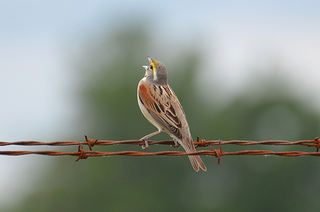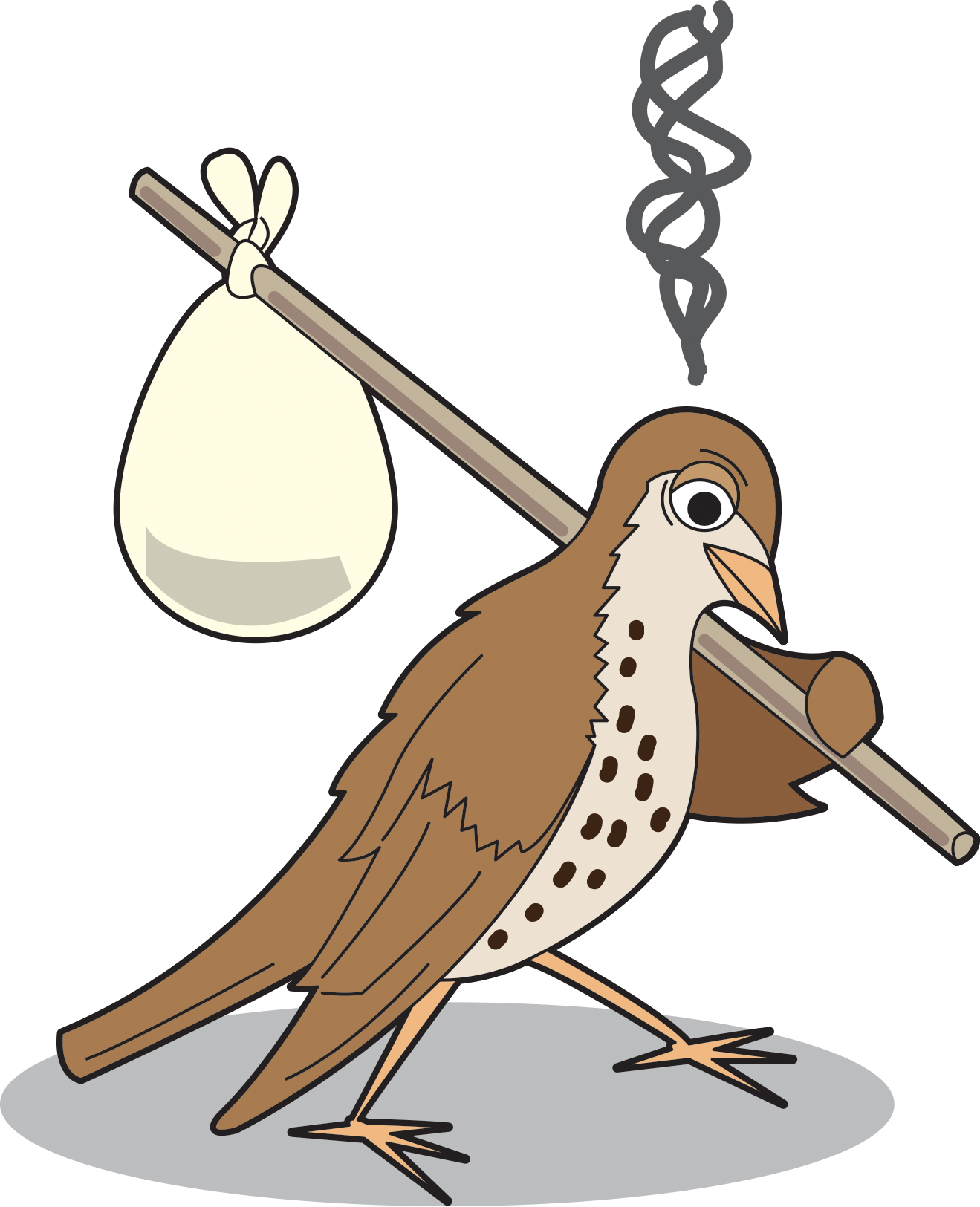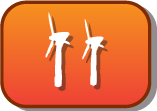Disclaimer: This material is being kept online for historical purposes. Though accurate at the time of publication, it is no longer being updated. The page may contain broken links or outdated information, and parts may not function in current web browsers.

A dickcissel singing on a wire. Credit: David L. Govoni
Northern parts of the central United States got an unexpected visitor in the summer of 2012. Actually, it got thousands of them. The area experienced an invasion of a brown and yellow bird named the dickcissel.
Dickcissels are common to many areas in the United States. They are not common in northern parts like North Dakota, Minnesota, and Wisconsin. Why did the dickcissel show up in these areas? Extreme weather caused by climate change may have forced them to find a new home.
Trouble for birds

Climate change does a lot more than just heat up our planet. Climate change can also cause more intense weather. That could mean more hurricanes, floods, heat waves, droughts, and even cold spells.
This extreme weather can be trouble for birds. Scientists have noticed that when extreme weather happens, fewer birds show up in the places they call home.
Why? One idea is that the birds avoid the extreme weather by moving to a friendlier area.
Satellites to the rescue!
Amazingly, scientists can use satellites to test this idea. Even though these satellites are high above Earth, they can tell us a lot about what is happening on the ground.

An artists conception of NASA's AQUA satellite. This satellite measures things like precipitation and evaporation. It can identify areas that experience drought.
The scientists use two types of satellites. One type works like a big 3D camera that takes pictures of the ground. They use this kind to map the neighborhoods of different species of birds. The second type looks at weather and climate. These satellites can measure things like temperature, precipitation and evaporation, and cloudiness.
Scientists can then combine this information to see when extreme weather happens in the areas that different birds call home. But how do they know if these weather events are affecting the birds?
This is where field scientists, amateur birders, and even hunters can help. They collect data on where birds show up (and where they don’t show up). Using this data, scientists can see when and where birds travel.
If scientists find a bird species in a new area at the same time their regular home experiences extreme weather, this could explain why there appear to be fewer birds. Their numbers don’t shrink—they just move somewhere else.
What we can do to help
Scientists have just begun to use satellites to figure out what happens to birds during extreme weather. Their work is very important. If birds are moving to other areas because of climate change, they may need our help. We may need to protect their new habitats. Thanks to satellites, we can get the clearest picture so far of where these new habitats could be.













